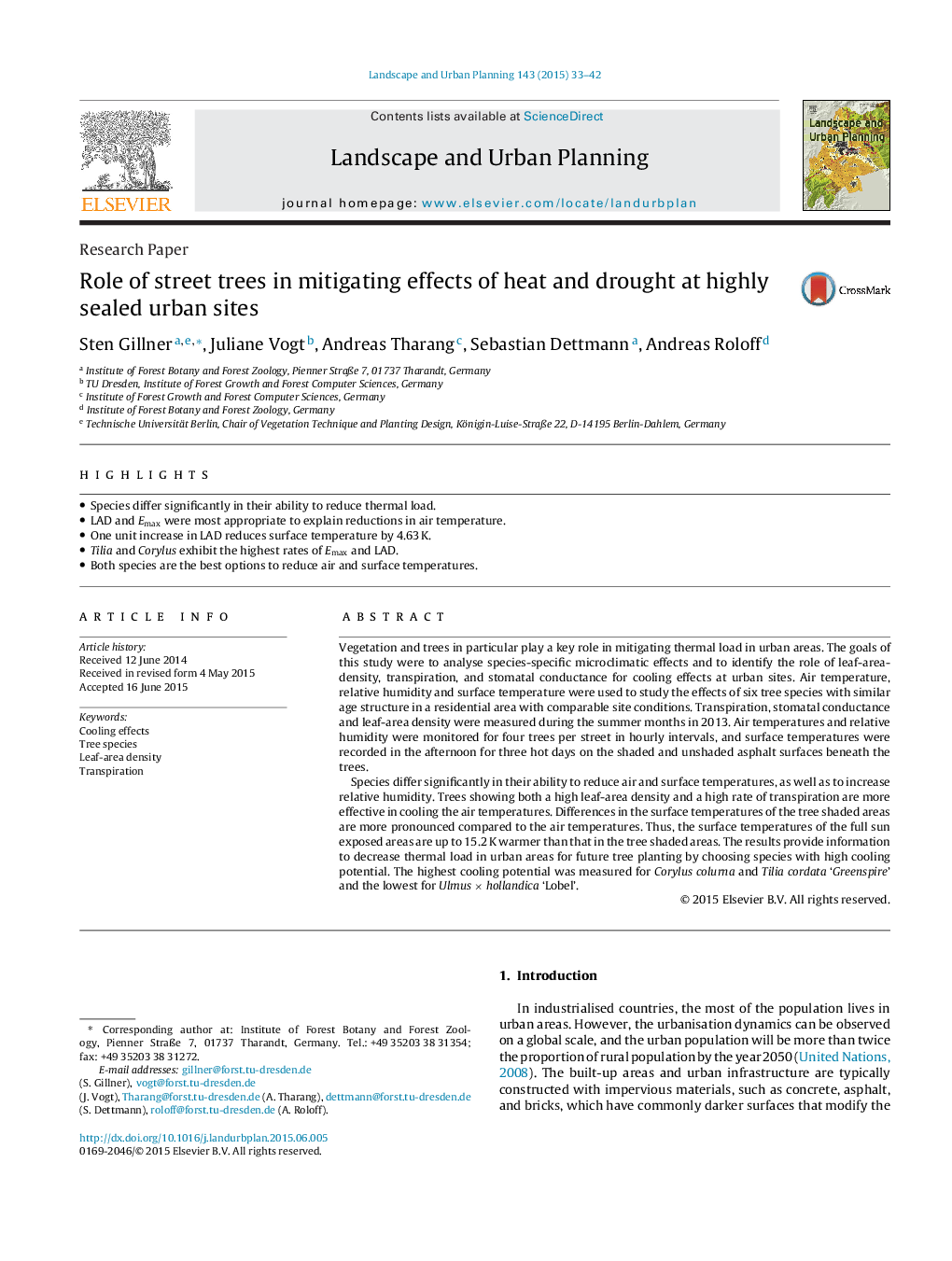| Article ID | Journal | Published Year | Pages | File Type |
|---|---|---|---|---|
| 7460961 | Landscape and Urban Planning | 2015 | 10 Pages |
Abstract
Species differ significantly in their ability to reduce air and surface temperatures, as well as to increase relative humidity. Trees showing both a high leaf-area density and a high rate of transpiration are more effective in cooling the air temperatures. Differences in the surface temperatures of the tree shaded areas are more pronounced compared to the air temperatures. Thus, the surface temperatures of the full sun exposed areas are up to 15.2 K warmer than that in the tree shaded areas. The results provide information to decrease thermal load in urban areas for future tree planting by choosing species with high cooling potential. The highest cooling potential was measured for Corylus colurna and Tilia cordata 'Greenspire' and the lowest for Ulmus à hollandica 'Lobel'.
Related Topics
Life Sciences
Agricultural and Biological Sciences
Ecology, Evolution, Behavior and Systematics
Authors
Sten Gillner, Juliane Vogt, Andreas Tharang, Sebastian Dettmann, Andreas Roloff,
